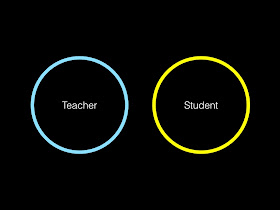Here are the questions and results (from 65 people):
Question: What are the frustrations of a photocopier?
Question: What's your alert level when the photocopier is functioning?
Select any feeling(s) you associate with the photocopier malfunctioning.
Select an initial step you typically take if a photocopier malfunctions on your watch.
Let me translate. Most answered that they "Try and fix it (replace ink, clear paper jam, etc.)
Select any feeling(s) you associate with YOU fixing the photocopier.
Look at that! Accomplished! Happy!
We have to respect that there are times we still feel frustrated, maybe even excited.
Here's where I'm headed.
What are your thoughts?
Jams,
306
Question: What are the joys of a photocopier?
You had many great things to share about the efficiency of providing your students with copies and some of the detailed functions of the machine. An interesting number of you find joy in the warmth of the copies (I'll admit, me too). Some of you veteran teachers shared how you appreciate the evolution of photocopy machines. Here are a few of my favorite "joys" quotes:- The smell of ozone, the warmth of fresh copies, and the feeling that I'm ready.
- I usually bounce/jam to the rhythm as I wait for my copies...
- Solving a paper jam.
Question: What are the frustrations of a photocopier?
Overwhelmingly, paper jams are the most frustrating part of a photocopier according to you. I would say low toner and long lines are on the heels of paper jams. Here are a few of my favorite "frustrations" quotes:
- Remembering my code
- When it thinks it knows BETTER than you what size paper you want.
- Time lost from my life that I will never get back.
First-world problems, right? The next set of questions asked about your feelings, using a Likert scale from one to five.
Question: When the photocopier is functioning, what's your level of satisfaction?
1 = Not satisfied
5 = Extremely Satisfied
1 = Not satisfied
5 = Extremely Satisfied
Close to 60 people felt satisfied to extremely satisfied.
Question: When the photocopier is malfunctioning, what's your level of satisfaction?
Question: When the photocopier is malfunctioning, what's your level of satisfaction?
Question: What's your alert level when the photocopier is functioning?
1 = Ho-Hum
5 = High Alert
Varied data, but most seemed to lean toward Ho-Hum.
Question: What's your alert level when the photocopier is malfunctioning?
5 = High Alert
Varied data, but most seemed to lean toward Ho-Hum.
Question: What's your alert level when the photocopier is malfunctioning?
Select any feeling(s) you associate with the photocopier malfunctioning.
Select an initial step you typically take if a photocopier malfunctions on your watch.
Let me translate. Most answered that they "Try and fix it (replace ink, clear paper jam, etc.)
Select any feeling(s) you associate with YOU fixing the photocopier.
Look at that! Accomplished! Happy!
We have to respect that there are times we still feel frustrated, maybe even excited.
Here's where I'm headed.
- Can any of these feelings or photocopier experiences be similar to learning math?
- Is fixing a photocopier error analysis?
- Are there times students just go through the typical process at a ho-hum alert level?
- Are students given opportunities to be problem-solvers?
- Are students frustrated with math?
- Are students frustrated when problem-solving, but persevere and feel accomplished, happy, and excited at the point of resolution?
I have many more thoughts and questions. My goal for 2015 is to provide teachers with a conference workshop/session where we use error analysis as one way to help students better learn and understand math. I've blogged about this a couple of times (Exponents and Linear Systems), but want to continue exploring this arena.
What are your thoughts?
Jams,
306
Credits
*Google Forms to create the form
*Google Sheets to organize the data and create charts
*Wordle to create the word clusters.
*Google Forms to create the form
*Google Sheets to organize the data and create charts
*Wordle to create the word clusters.
















































